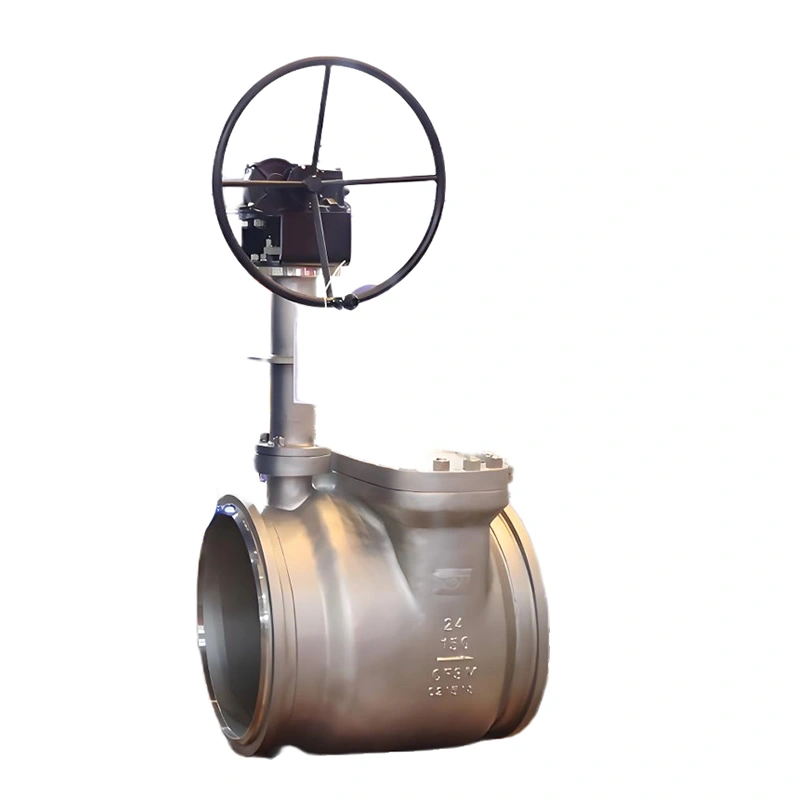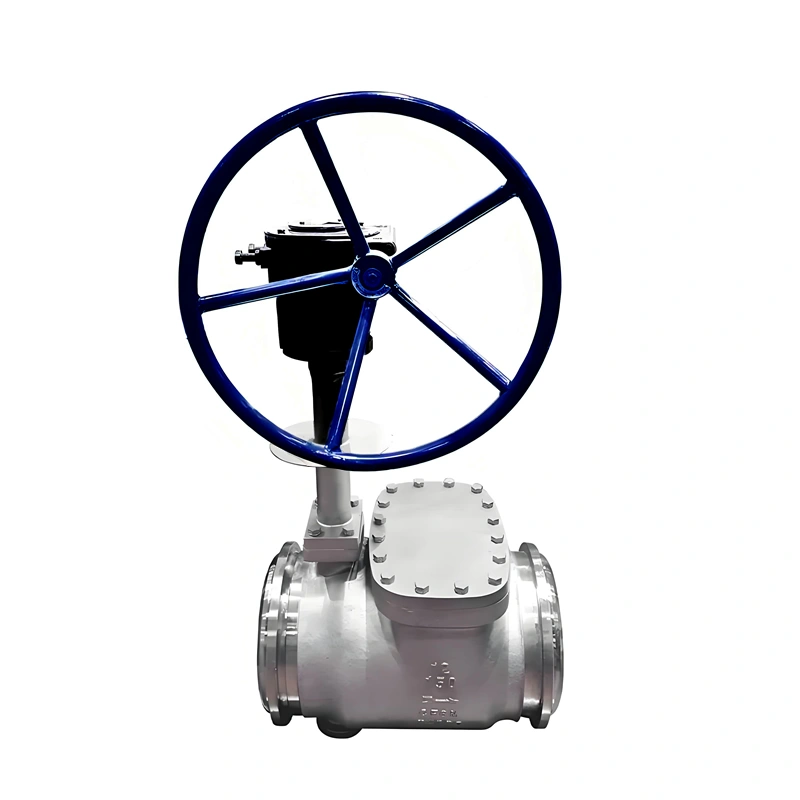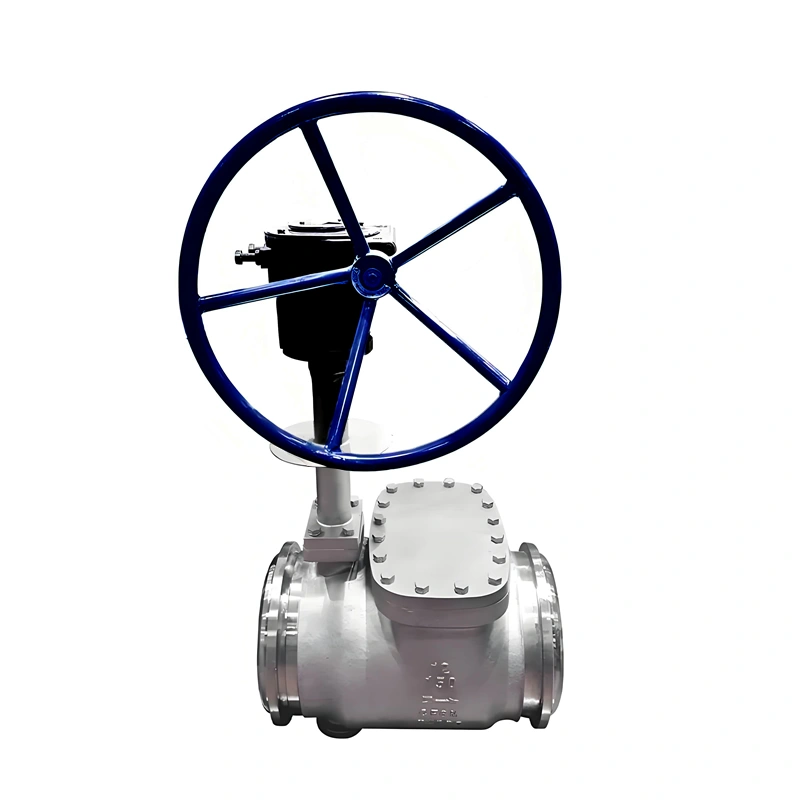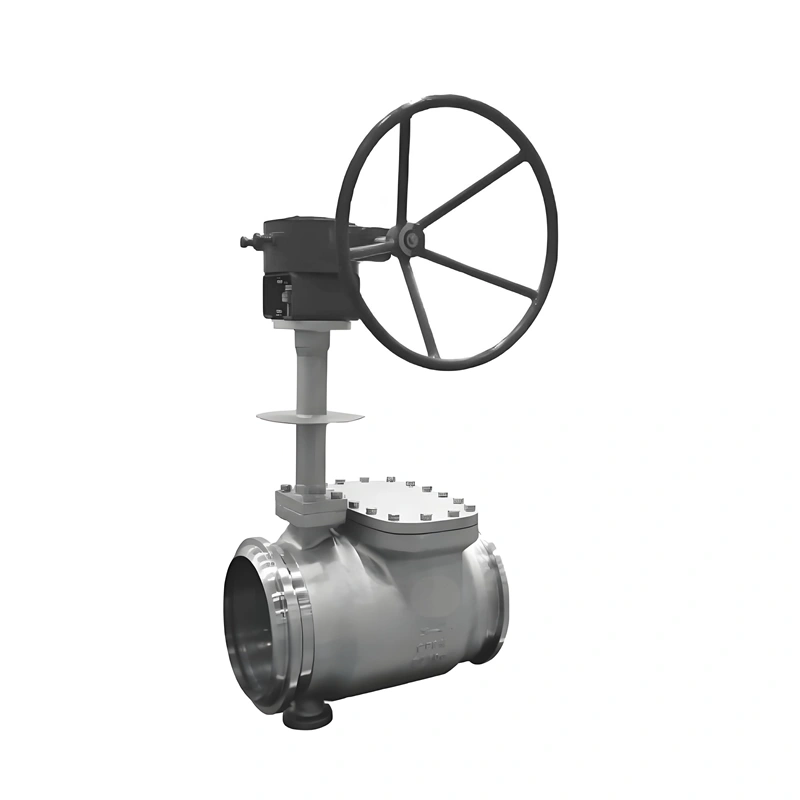- DN50-DN600
- LNG, liquid nitrogen, low-temperature water
- Manual worm gear
- -40℃~-196℃ , -270℃
- API 598, EN 12266, CE, WRAS
- Ductile iron (QT450)/cast steel (WCB)
- VITON/PTFE (soft seal), Stellite (optional hard seal)
- Butt weld (ASME B16.25)
- Triple offset, cryogenic-resistant
- Low-temperature hydrostatic/helium leak test, 100,000-cycle life test
Specification
Newway Cryogenic Butt Weld Manual Butterfly Valve: A Reliable Solution for Industrial Low-Temperature Fluid Control
I. Product Technical Positioning
The Newway cryogenic butt weld manual butterfly valve is specially designed for low-temperature applications ranging from -40°C to -196°C, featuring a triple-offset sealing structure (offsets between stem axis, disc center, and sealing surface centerline). Constructed with ductile iron (DI) and cast iron (CI), it suits cryogenic media like water, liquefied natural gas (LNG), and liquid nitrogen. The valve connects to pipelines via butt weld ends, combined with a manual worm gear drive, meeting cut-off and regulation needs in water treatment, oil & gas storage, and air separation equipment. Certified to ISO 9001, CE, and WRAS for drinking water safety, it balances safety and reliability.
II. Core Product Features
(A) Cryogenic Adaptation Design
Low-Temperature Material Toughness:
The body uses ductile iron QT450-10 (impact energy ≥27J at -40°C) or cast steel WCB (impact energy ≥27J at -29°C), while the stem employs 17-4PH stainless steel (tempered for -196°C brittleness resistance), ensuring structural stability in cold environments.
Anti-Freeze Sealing System:
The seat uses VITON fluoroelastomer or PTFE, maintaining elasticity from -60°C to 200°C. With spring-loaded pre-tensioning, it compensates for material shrinkage at low temperatures, achieving a leakage rate ≤1×10⁻⁸m³/s (EN 12266).
(B) Triple-Offset Sealing Structure
Zero-Friction Operation:
The triple-offset design disengages the disc from the seat within 5° of opening, eliminating wear. Opening/closing torque is 35% lower than concentric valves, with DN300 valves requiring ≤80N·m for manual operation—ideal for cold-weather human operation.
Metallic Hard Seal Redundancy:
The disc seat is overlaid with Stellite 6 alloy (≥2mm thickness), hardness HRC45-50, providing metal-to-metal sealing if soft seals fail. It meets API 607 fire test requirements (leakage ≤0.01L/min·mm during fires).
(C) Butt Weld Connection Advantages
Welding Strength Assurance:
Butt weld ends comply with ASME B16.25, with a 37°±2° bevel angle. Post-welding 100% radiographic testing (RT) ensures crack-free joints for pressure pipelines (PN10-PN40).
Leak-Free Installation:
Welded connections eliminate flange gasket leaks, critical for LNG pipelines (-162°C), reducing potential leakage points by 80% versus flanged connections.
III. Key Technical Attributes
|
Parameter Category |
Technical Indicators |
Expansion Options |
|
Nominal Size |
DN50-DN600 (2″-24″) |
Custom DN700-DN1200 (engineering evaluation) |
|
Pressure Rating |
PN10-PN40 (1.0-4.0MPa) |
Class 150-Class 600 (ASME standards) |
|
Temperature Range |
-40°C~-196°C (standard) |
Ultra-cryogenic -270°C (Inconel 625 material) |
|
Connection Type |
Butt Weld |
Flanged, socket weld (customizable) |
|
Actuation |
Manual Worm Gear (standard) |
Electric/pneumatic actuators (IP68 protection) |
|
Sealing Standards |
API 598, EN 12266 |
Fire certification API 607, BS 6755 |
Product Overview
IV. Manufacturing Processes and Quality Control
(A) Precision Manufacturing Flow
Cryogenic Material Treatment:
Ductile iron bodies undergo -40°C cryogenic annealing to relieve casting stress, with graphite controlled as Type A (spheroidization rate ≥90%). Stainless steel components receive deep cryogenic treatment (-196°C×24h) to stabilize martensite and prevent low-temperature phase changes.
Seat Surface Machining:
Disc seats are processed via 5-axis CNC grinding, with flatness error ≤0.01mm and roughness Ra≤0.8μm. Stellite alloy overlay is ultrasonically inspected for porosity after welding.
Assembly and Testing:
Each valve is tested in a -40°C environmental chamber, undergoing 1.5x nominal pressure hydrostatic testing (30-min hold) and 1.1x air pressure leakage testing (helium mass spectrometry). Sampled valves complete 100,000 cycle life tests (seal performance retention ≥95% at low temperatures).
(B) Quality Certification System
Material Traceability: Key components include heat numbers and CMA-certified chemical reports, supporting third-party PMI testing.
System Certifications: Holds ISO 9001, CE-PED, WRAS (drinking water), and marine certifications (LR, DNV-GL) for ship applications.
After-Sales Guarantee: 18-month warranty covers leakage due to material defects under cryogenic conditions.




